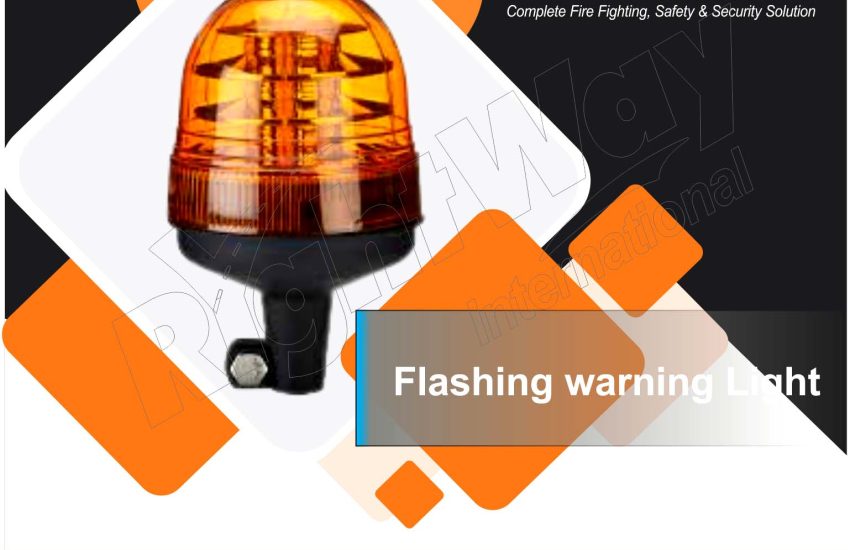Flashing warning lights are crucial tools used in a variety of settings to alert individuals and vehicles to potential hazards or changes in conditions. From roadwork zones and emergency vehicles to construction sites and industrial areas, these lights play a significant role in ensuring safety and preventing accidents. This article explores the purpose, types, and benefits of flashing warning lights, as well as their applications across different environments.
Purpose of Flashing Warning Lights
- Hazard Alert: Flashing warning lights are designed to alert drivers and pedestrians to potential hazards. Whether it’s a sudden change in road conditions, a construction zone, or an emergency situation, these lights serve as a visual cue to exercise caution.
- Increased Visibility: By emitting a bright and noticeable signal, flashing lights enhance visibility in low-light conditions or during adverse weather. This ensures that warnings are seen from a distance, giving individuals more time to react.
- Regulation Compliance: In many jurisdictions, flashing warning lights are a legal requirement in certain situations, such as on emergency vehicles and at construction sites. They help ensure compliance with safety regulations and standards.
- Traffic Management: Flashing lights can be used to manage traffic flow and direct drivers to alternate routes, reducing congestion and preventing accidents.
Types of Flashing Warning Lights
- Beacon Lights: These are often used on emergency vehicles like police cars, fire trucks, and ambulances. Beacon lights can be rotating or strobe lights and are designed to attract attention quickly.
- Strobe Lights: Known for their intense, high-frequency flashes, strobe lights are used in various applications, including construction sites, roadside warnings, and as part of alarm systems.
- LED Warning Lights: LED technology has become popular for its energy efficiency and longevity. LED warning lights are used in traffic signals, vehicle lighting, and industrial applications due to their bright and clear illumination.
- Rotating Lights: These lights rotate 360 degrees and are commonly seen on construction vehicles and roadside warning signs. They provide a continuous alert over a wide area.
- Flashing Light Bars: Mounted on vehicles or signs, flashing light bars are used for emergency and safety purposes. They provide a wide range of visibility and are often equipped with multiple light colors and patterns.
- Traffic Warning Lights: These include lights used at roadwork zones or traffic control points. They often feature specific patterns to indicate changes in traffic conditions, such as lane closures or detours.
Benefits of Flashing Warning Lights
- Enhanced Safety: The primary benefit of flashing warning lights is their ability to improve safety by alerting individuals to potential dangers. This reduces the risk of accidents and injuries by providing clear, visible warnings.
- Improved Visibility: Flashing lights are particularly effective in low-light conditions or poor weather, ensuring that warnings are visible from a distance. This gives drivers and pedestrians more time to react appropriately.
- Effective Communication: Flashing lights can convey important messages quickly and clearly. In emergency situations, they can signal the need for immediate action or provide instructions for safe behavior.
- Versatility: Flashing warning lights are adaptable to various environments and needs. They can be used in roadwork zones, emergency response situations, construction sites, and more, making them a versatile safety tool.
- Compliance with Regulations: Using flashing warning light helps ensure adherence to safety regulations and standards, which can be crucial for legal compliance and minimizing liability.
Applications of Flashing Warning Lights
- Emergency Vehicles: Flashing lights on police cars, ambulances, and fire trucks are crucial for signaling the presence of emergency responders and clearing the way for urgent situations.
- Roadwork Zones: In construction and road maintenance areas, flashing lights alert drivers to changes in road conditions, lane closures, and other hazards, ensuring safe passage through the area.
- Industrial Settings: Flashing warning lights are used in factories and warehouses to signal machinery operation, alert workers to potential hazards, and ensure safe working conditions.
- Traffic Control: Flashing lights at intersections, crosswalks, and detours help manage traffic flow, direct drivers, and improve overall road safety.
- Public Events: During public events or gatherings, flashing warning lights can help manage crowds, indicate emergency exits, and provide clear guidance to attendees.
Conclusion
Flashing warning light are vital components of modern safety systems, providing essential alerts and enhancing visibility in various environments. Their ability to convey immediate warnings and improve safety makes them indispensable in emergency situations, construction zones, industrial settings, and traffic management. By understanding the different types and benefits of flashing warning lights, we can better appreciate their role in preventing accidents and ensuring safe conditions for all.


